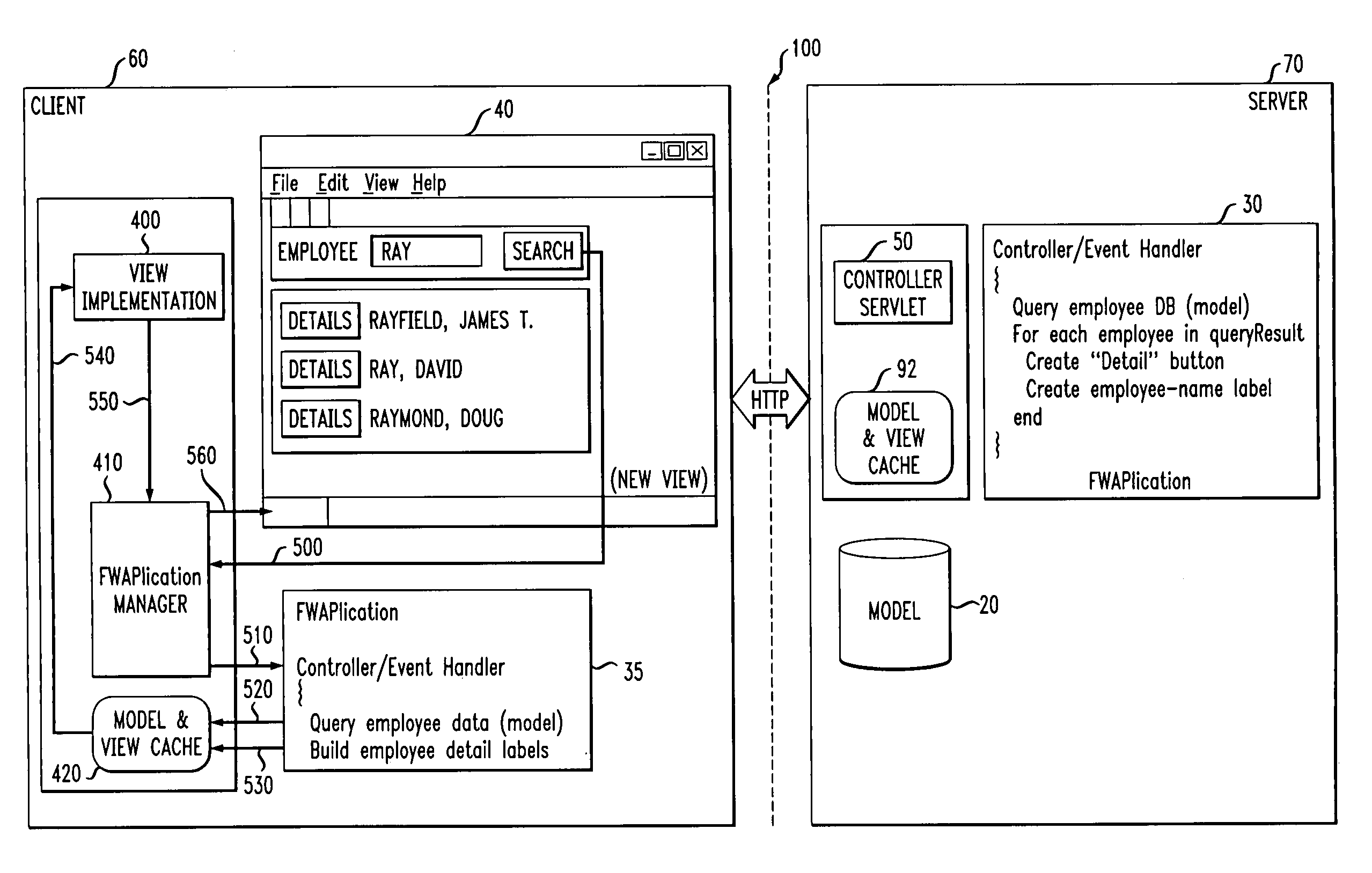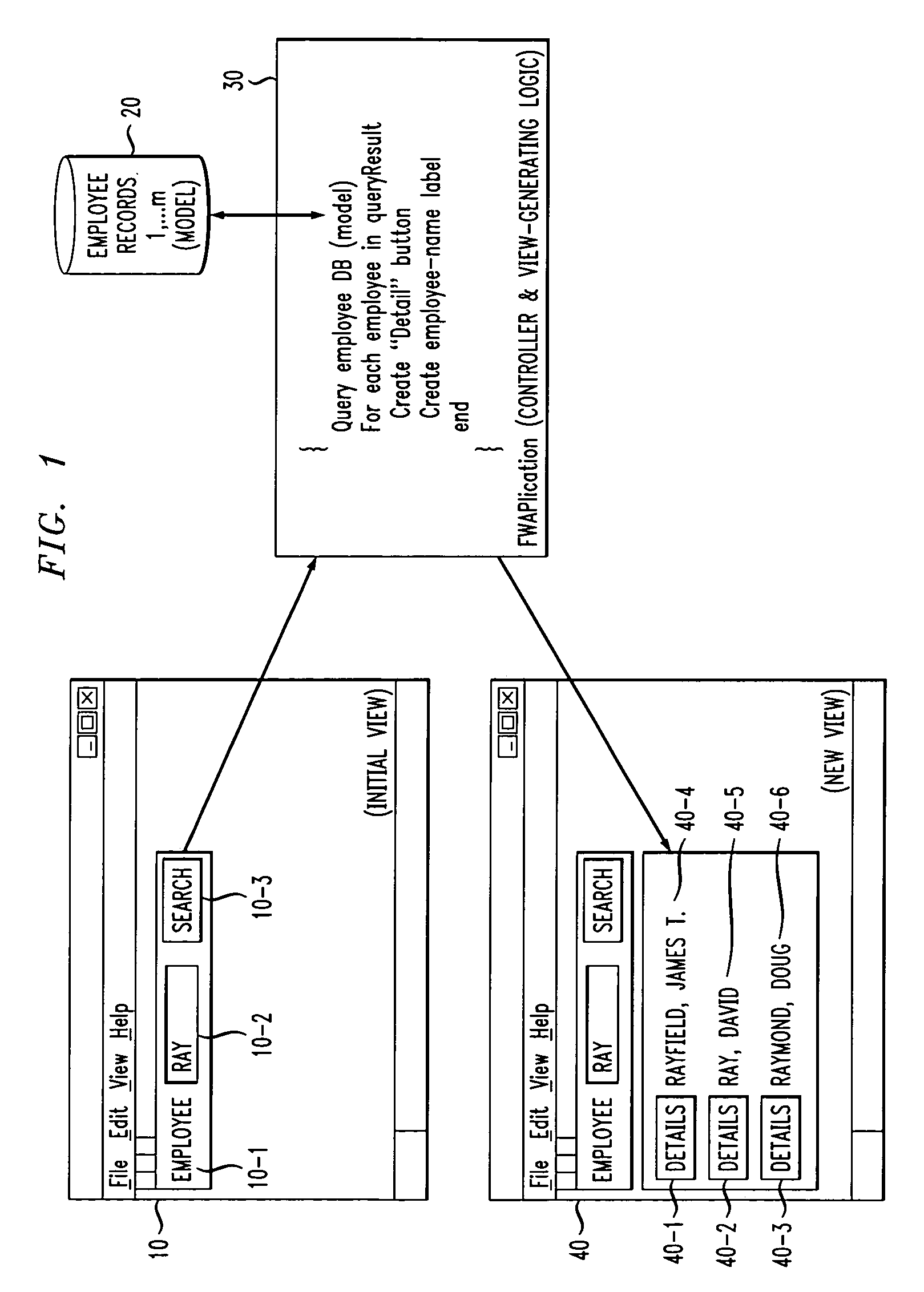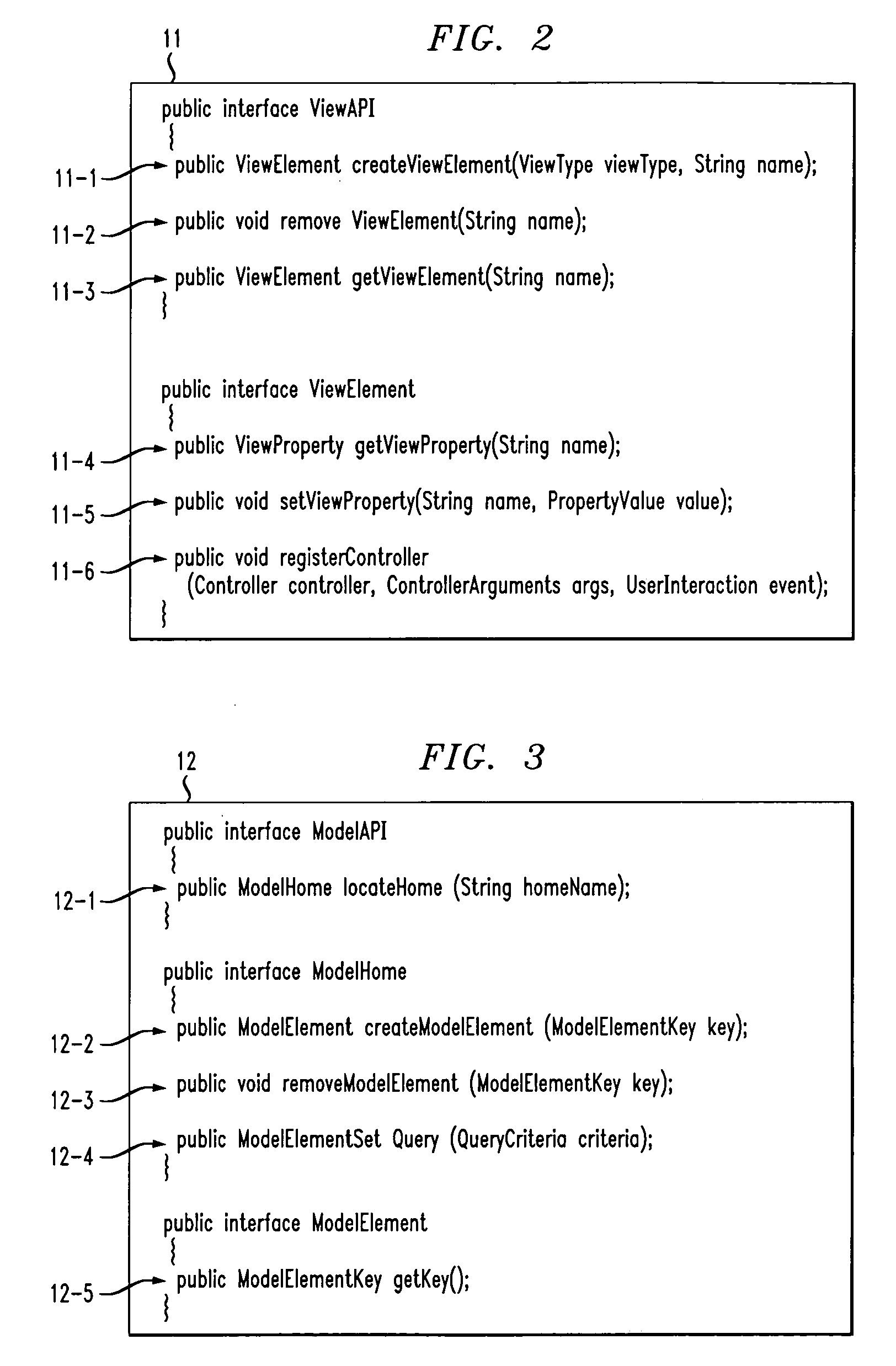System and method for dynamic runtime partitioning of model-view-controller applications
- Summary
- Abstract
- Description
- Claims
- Application Information
AI Technical Summary
Benefits of technology
Problems solved by technology
Method used
Image
Examples
Embodiment Construction
[0031]The present invention provides a “canonical form” to describe MVC applications. One aspect of the canonical form is that it is independent of, and does not involve, issues related to deploying the application in a distributed client / server environment. The canonical form is therefore “single MVC” because the MVC description of the application relates to a single or non-distributed platform.
[0032]As will be illustrated below, the canonical form of an application according to the invention may comprise: (i) View components; (ii) Model / View APIs; (iii) Event Handlers (Controllers) and an Event Handler registration; and (iv) an Application lifecycle. As is known and as will be evident, the lifecycle of an application refers to the fact that objects or elements associated with the application can be created and deleted.
[0033]The inventive application form is “canonical” in the sense that MVC applications can be developed and tested in this form with the assurance that when the appl...
PUM
 Login to View More
Login to View More Abstract
Description
Claims
Application Information
 Login to View More
Login to View More - R&D
- Intellectual Property
- Life Sciences
- Materials
- Tech Scout
- Unparalleled Data Quality
- Higher Quality Content
- 60% Fewer Hallucinations
Browse by: Latest US Patents, China's latest patents, Technical Efficacy Thesaurus, Application Domain, Technology Topic, Popular Technical Reports.
© 2025 PatSnap. All rights reserved.Legal|Privacy policy|Modern Slavery Act Transparency Statement|Sitemap|About US| Contact US: help@patsnap.com



